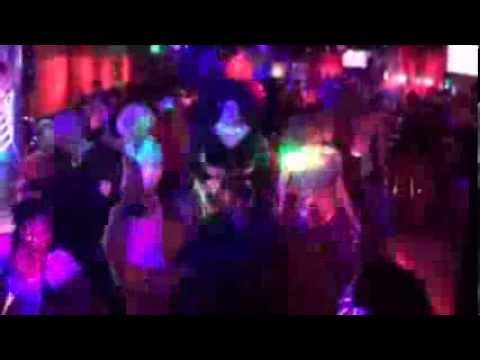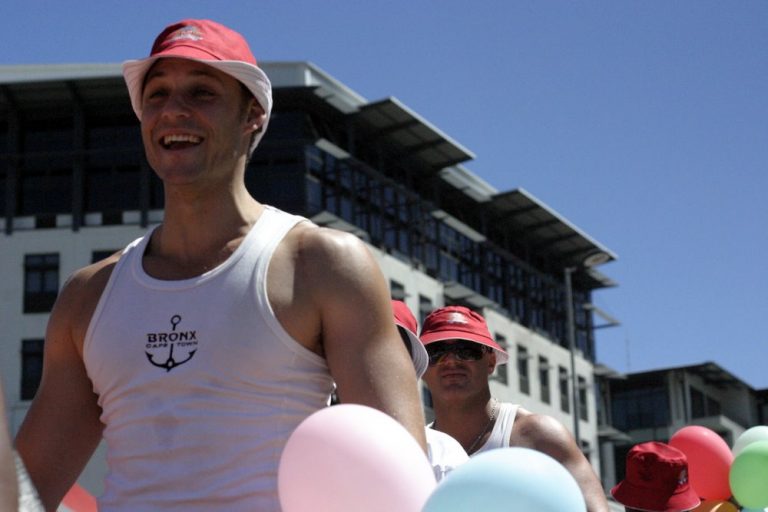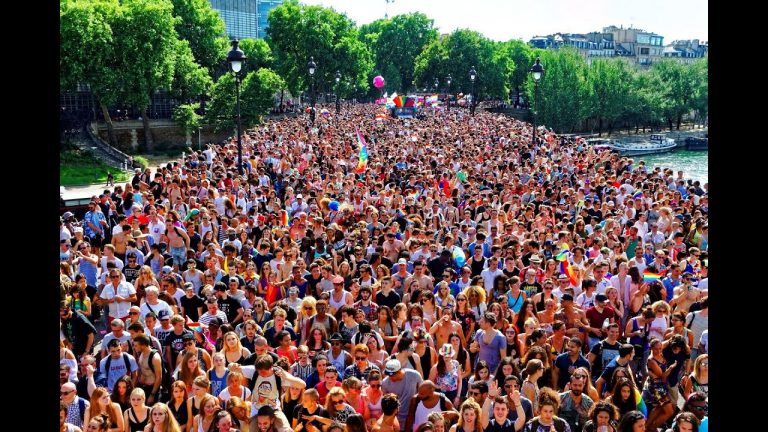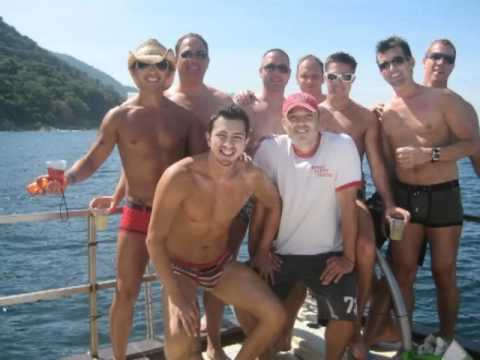Conservative Virginia has surprisingly much to offer gay visitors
Virginia, with its reputation for conservative political and religious views, doesn’t always strike gays and lesbians as a likely place to plan a vacation. But while it’s been home to right-wing ideologues like George Allen, Pat Robertson, Ollie North, and Jerry Falwell, this state famed for its natural scenery offers several great reasons for visiting. Progressive and attractive Charlottesville is steeped in history and abounds with hip eateries, antiques shops, and attractive, hilly terrain. And the deeply Southern and proper capital, Richmond, is interior Virginia’s gay hub, and also home to a slew of exceptional museums and historic sites.
Richmond – a hilly, tree-shaded city of about 200,000 residents – sits on a bluff over the James River. Its historic downtown, with a thoroughly modern skyline, is anchored by one of the South’s most imposing and visually dramatic government buildings, the Virginia State Capitol (it’s open daily for free tours). If sightseeing interests you, allow at least a couple days just to see the city’s highlights – there are several excellent museums and intriguing neighborhoods. Among the top attractions, check out Maymont Estate, with its fabulous gardens and ornately decorated mansion; the Richmond History Center, with changing exhibits on the city’s 400-year heritage; and the John Marshall House, the home of one of colonial America’s foremost statesmen.
Just west of downtown, the Fan is a gracious neighborhood of neatly preserved, mostly redbrick, 19th-century houses. You’ll also find the campus of Virginia Commonwealth University, and the grand and distinguished Monument Avenue. For several blocks this broad road with a grassy median is lined with statues of Confederate icons. More recently, amid considerable controversy, a statue of the black tennis star Arthur Ashe – a Richmond native who died of AIDS in 1993 – was erected along the avenue.
Quite a few gays and lesbians reside in the Fan, but the gay community is even more visible in the neighborhood just west, Carytown. Here, Cary Street and several cross streets are lined with cafes and boutiques, including Soap, a whimsical shop that carries fine bath products, and Urban Artifacts, know for hip home decor and accessories. Be sure to visit Carytown’s highly respected Virginia Museum of Fine Arts, which pop-culture junkies adore for its Triple Elvis by Andy Warhol.
There’s plenty of good eating in this neighborhood. Java addicts get their fix at Capital Coffee and Desserts, a cute sidewalk cafe with toothsome calorie-laden cookies and cakes. New York Delicatessen & Restaurant serves hefty sandwiches and filling breakfasts (despite the name, this is a full-service sit-down restaurant with a liquor license), and Bev’s is worth a stop for such memorable flavors of homemade ice cream as candy-cane and Almond Joy. Pre- and post-club-goers frequent the gay-popular, neon-infused Galaxy Diner.
Among Richmond’s more upscale gay-friendly restaurants, don’t miss the handsome Can Can Brasserie, a favorite gay date venue serving superbly prepared French fare, from traditional coq au vin to braised short ribs with roasted butternut squash, braised celery, chestnuts, and a port-wine reduction. Bacchus is another excellent eatery near Carytown, known for a creative wine list and such tempting Mediterranean cooking as sauteed calamari with olive oil, lemon, and capers; and seared sea scallops with prosciutto and truffle oil.
Richmond’s vintage riverfront areas, the warehouse district of Shockoe Slip and the neighboring commercial sector of Shockoe Bottom, have been brought dramatically back to life in recent years after floods and disuse blighted these parts of town during much of the previous century. Now you’ll find nightclubs, galleries, and restaurants – plus a provocative arts scene. For dinner, try River City Diner, which serves retro contemporary American cuisine, or Pomegranate Euro Bistro, where you can sup on grilled lamb chops over porcini-mushroom risotto, or pan-seared halibut with a broth of littleneck clams and fava beans.
Many gays and lesbians have had a hand in revitalizing the historic Church Hill area, just east of Shockoe Bottom, which abounds with stately Greek Revival, Victorian, and Federal homes. One off-the-beaten-path excursion worth the effort is a visit to the Lewis Ginter Botanical Gardens at Bloemendaal, a few miles northwest of town. Here the estate once owned by Patrick Henry and developed by Ginter, the founder of the American Tobacco Company, now contains the largest public perennial gardens on the East Coast.
Richmond has a well-rounded and friendly nightlife scene. Godfrey’s is a lively downtown spot for dancing, with 18-and-over nights and an entertaining drag brunch on Sunday afternoons – it draws the biggest crowds on Wednesday and Saturday nights. Club Colors ranks among the most popular (predominantly) African-American gay nightclubs on the East Coast.
In Carytown, friendly and attractive Barcode draws a mostly male, preppy crowd to watch camp classics and music videos on the TV monitors, sip cocktails on the patio, and shoot pool. Lesbians and more than a few guys (it’s more male-oriented on Thursdays) frequent Babe’s, a righteously raucous bar and restaurant with a large dance area and some great live-music shows – there’s also a volleyball court out back.
Later on weekend evenings, many revelers end up at Fielden’s, a BYOB after-hours club (open till 6 a.m.) on the edge of the Fan – it’s members only, but visitors are welcome if they pay the membership fee. Z2 is another well-known Carytown option, which has a great reputation for fun cabaret and drag shows.
As for accommodations, if you can swing it financially, stay at the famous Jefferson Hotel, an exceptionally striking turreted building – an amalgam of exotic styles – that dates to 1895 and is a hallmark of Southern grace and gentility. If nothing else, admire the swanky lobby with its 70-foot stained-glass rotunda and grand staircase, or dine in the hotel’s chichi Lemaire Restaurant. A bit less expensive, the modern mid-rise Omni Richmond sits in the center of downtown, close to the bars and restaurants of Shockoe Bottom.
About an hour west of Richmond, the charming collegiate city of Charlottesville – famous for the regal, Jeffersonian campus of the University of Virginia – has arguably the most visible gay community in the state. You’ll often see same-sex couples walking about the bustling downtown, or eating in one of the many trendy restaurants. It’s a pleasure to walk around campus, notable for its excellent Bayly Art Museum and the courtly architecture inspired by the school’s founder, Thomas Jefferson. Try to dedicate a full day to explore the enchanting countryside outside of Charlottesville. Just south of town, you can tour Monticello, the former home of President Jefferson, which is a short drive from President James Monroe’s estate, Ash Lawn-Highland.
A favorite activity in town is strolling along the pedestrian-only Historic Downtown Mall, where you’ll find great shopping, as well as the city’s most inviting gay nightlife option, Escafe, which is also a commendable restaurant serving reasonably priced international chow (filet mignon quesadillas, shrimp pot stickers, rigatoni with pancetta). An amusing mural on one wall depicts various locales around Charlottesville, and in warm weather, you can relax on a patio overlooking the pedestrian traffic.
Other excellent restaurants on or near the mall include Ten Sushi, a chic spot with a big-city vibe and such rarefied modern-Asian fare as kobe short ribs with miso sauce, and lobster tempura in sweet-and-pepper garlic aioli – you’ll also find one of the largest sake selections in the country. Blue Light Grill and Raw Bar is similarly sophisticated and serves even better food, including blue-crab salad with sweet-spring peas, and big-eye tuna and foie gras with a sour-cherry sauce. For a casual but delicious lunch or dinner, consider Hamilton’s at First and Main, where the likes of grilled-quail Cobb salad, and smoked pork tenderloin with lemon-chive butter await you.
Mudhouse is the coolest coffeehouse on the mall, with sidewalk seating and free Wi-Fi. Around the corner, have a drink at the gay-friendly X lounge, a slick, postindustrial space with tall windows and high ceilings. This is also a good bet for cocktails, or for a full dinner – the contemporary American cooking is first-rate. The nearby Gravity lounge has something of a LGBT following (including occasional women’s nights on Saturdays). This homey basement space has live folk music and jazz many nights and funky lounge seating. Come for coffee, to surf the Web at the computer terminal, or to sip wine and beer with friends.
Near UVA campus. the lavish Inn at Court Square, which is the oldest structure in downtown Charlottesville, is also extremely gay-friendly. Among the seven rooms, many have whirlpool baths and working fireplaces. For a splurge, check into the Clifton Inn, a posh getaway built in the 18th century – it was once the home of Thomas Jefferson’s daughter. The 14 elegantly furnished rooms occupy several buildings set amid 100 acres of fragrant gardens. The inn’s restaurant serves some of the best food in town, such as “forever-roasted” pork belly with a whipped sauce of golden raisins and cider. If you’re seeking a truly romantic getaway, spending a night or two at Clifton is hard to beat.
Related: Eat and Play in Nashville






